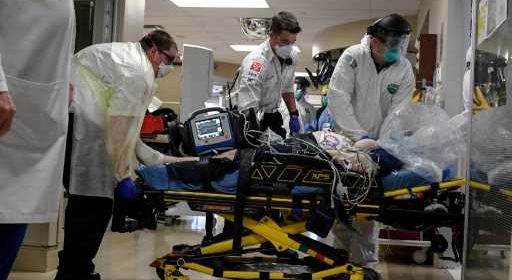Surge in all deaths — not just due to COVID-19 — during pandemic has hit people of color hardest

As deaths soared across Colorado during the first six months of the pandemic, people of color died at disproportionately high rates not only from COVID-19 itself, but also from other health conditions, according to an analysis of state data by The Denver Post.
For months, the coronavirus pandemic has highlighted racial inequalities across the nation, and public health officials have attributed the higher rates of infections, hospitalizations and deaths among people of color to those societal and health inequities.
“This same thing has been going on for decades,” said Dr. Bill Burman, director of Denver Public Health. “What made it so evident in COVID is that it was a very short time window between a disparity and these consequences like hospitalization and death.”
Overall deaths in Colorado increased 20% during the first six months of the coronavirus pandemic as at least 22,723 residents died between March and August, according to provisional death-certificate data from the state Department of Public Health and Environment.
But the toll on people of color has been higher. Overall deaths — beyond just COVID-19 — jumped more than 40% for both Black and Hispanic Coloradans compared to the average over the past three years. Deaths among Native Americans rose about 27% over the three-year average. By comparison, fatalities among white residents were up 14%, the analysis found.
Asian Americans/Pacific Islanders make up a small number — almost 470 — of the more than 22,700 deaths recorded in Colorado during the six months, but saw the largest increase as deaths were up 56% during the six-month period, according to the death certificate data.
The rise in deaths is mostly due to the novel coronavirus, but fatalities also have increased from overdoses, cirrhosis, heart disease, diabetes, Alzheimer’s and other causes, according to the data.
The reason for the rise in deaths varies. Some deaths may be from missed COVID-19 diagnoses or delaying care.
But more information is needed so public health and medical officials can understand why the deaths are occurring and how to address the disparities, said Dr. Terri Richardson, vice chair of the Colorado Black Health Collaborative.
“It doesn’t seem like the medical profession is really spending a lot of time with that and these are medical conditions,” she said, adding, “I just think there is a lot more that could be done.”
One stark revelation from the death certificate data is that suicides have increased among some groups during the first six months of the pandemic despite a 2% decline statewide. For example, there were almost twice as many suicides among Black Coloradans than would be expected during the six months, according to the analysis.
People are struggling not only with the pandemic and its economic fallout, but also with the racial justice movement, wildfires and hurricanes, Richardson said.
When the racial breakdown of COVID-19 cases and deaths was first released several months ago, Hispanic Coloradans only saw a rise in infections and in some cases hospitalizations. But now, they also are dying at a higher rate, the death certificate data shows.
Hispanic Coloradans didn’t initially see the higher rate of deaths because the population is younger, Burman said.
“Age has such a powerful impact on the risk of death,” he said.
Hispanic Coloradans make up about 24% of the 1,627 COVID-19 deaths, despite them representing 21.69% of the state population. Black residents make up more than 7% of coronavirus deaths, despite representing less than 4% of the state’s population, according to the health department.
The total number of COVID-19 deaths among Coloradans is lower than the health department’s tally of more than 2,000 fatalities, which includes non-residents who died in the state.
The reason for the higher rates of deaths has been attributed to the fact that people of color make up a larger share of essential jobs. Black and Latinos are also more likely to have health issues, such as diabetes and heart disease, that make people more at risk for complications from COVID-19.
“We are talking about this whole entire system that has set up our communities to literally die,” said Karla Gonzalez Garcia, policy director for the Colorado Organization for Latina Opportunity and Reproductive Rights. “And we have felt this for a long time.”
Source: Read Full Article